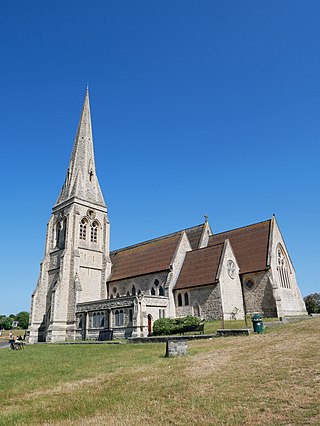
Blackheath is an area in Southeast London, straddling the border of the Royal Borough of Greenwich and the London Borough of Lewisham. Historically within the county of Kent, it is located 1-mile (1.6 km) northeast of Lewisham, 1.5 miles (2.4 km) south of Greenwich and 6.4 miles (10.3 km) southeast of Charing Cross, the traditional centre of London.

Richmond Park, in the London Borough of Richmond upon Thames, is the largest of London's Royal Parks and is of national and international importance for wildlife conservation. It was created by Charles I in the 17th century as a deer park. It is now a national nature reserve, a Site of Special Scientific Interest and a Special Area of Conservation and is included, at Grade I, on Historic England's Register of Historic Parks and Gardens of special historic interest in England. Its landscapes have inspired many famous artists and it has been a location for several films and TV series.

Bushy Park in the London Borough of Richmond upon Thames is the second largest of London's Royal Parks, at 445 hectares in area, after Richmond Park. The park, most of which is open to the public, is immediately north of Hampton Court Palace and Hampton Court Park and is a few minutes' walk from the west side of Kingston Bridge. It is surrounded by Teddington, Hampton, Hampton Hill and Hampton Wick and is mainly within the post towns of Hampton and Teddington, those of East Molesey and Kingston upon Thames taking the remainder.

Whipsnade Tree Cathedral is a 9.5-acre (3.8 ha) garden in the village of Whipsnade in Bedfordshire, England. It is planted in the approximate form of a cathedral, with grass avenues for nave, chancel, transepts, chapels and cloisters and "walls" of different species of trees.
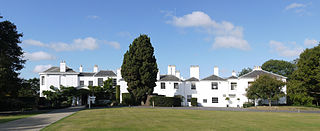
Pembroke Lodge is an initial, mainstream category listed Georgian two-storey large house in Richmond Park in the London Borough of Richmond upon Thames. It sits on high ground with views across the Thames valley to Windsor, the Chilterns and hills in the Borough of Runnymede. It has 11 acres (4.5 ha) of landscaped grounds, including part of King Henry's Mound from which there is a protected view of St Paul's Cathedral in the City of London. The grounds also include memorials to the 18th-century poet James Thomson and the 20th-century rock-and-roll singer and lyricist Ian Dury.

Cannizaro Park is a public park in Wimbledon in the London Borough of Merton. Located towards the south-western edge of Wimbledon Common, it is known for its ornamental landscaped gardens with ponds and sculpture.

Richmond upon Thames in the south west of Greater London has more parks, open spaces and nature reserves than any other London borough.

Wanstead Park is a municipal park covering an area of about 140 acres, in Wanstead, in the London Borough of Redbridge. It is also a district of the London Borough of Redbridge, which was in Essex until 1965.
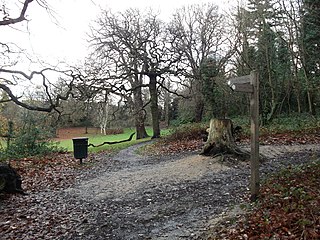
Beaulieu Heights 16 acres (6.5 ha) is an area of ancient woodland between South Norwood and Upper Norwood in the London Borough of Croydon, London. It is located between South Norwood Hill and Auckland Road with Auckland Rise to the north and Tummonds Gardens to the south. There are pedestrian entrances from South Norwood Hill and Auckland Rise, and a pond. The name is pronounced as if spelled "Beulah" like the nearby Beulah Hill, and not like the French word or the town of Beaulieu, Hampshire.
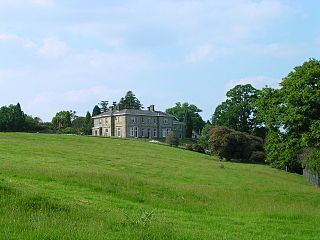
Leonardslee is an English country house and English landscape garden and woodland garden in Lower Beeding, near Horsham, West Sussex, England. The Grade I listed garden is particularly significant for its spring displays of rhododendrons, azaleas, camellias, magnolias and bluebells, with the flowering season reaching its peak in May. The estate includes a 19th-century Italianate style house and lodge as well as an intact Pulhamite rockery.

East Sheen Common, also known as Sheen Common, is an area of public open space in East Sheen in the London Borough of Richmond upon Thames. It is adjacent to Richmond Park and separated from it by a brick wall which forms the park's boundary. A gate, Bog Gate, provides pedestrian access between the park and the common. East Sheen Common is owned by The National Trust. It is currently leased to Richmond upon Thames Borough Council.

The Upper Lodge Water Gardens are a partially restored complex of early eighteenth century water gardens with garden canals in Bushy Park, near London. Originally built for Charles Montagu, 1st Earl of Halifax between 1709 and 1715 when he was ranger of Bushy Park and lived in Upper Lodge, they fell into disuse over subsequent centuries, but part of the complex was restored in the early 21st century and opened to the public in 2009.

Lyttelton Playing Fields is a 9 hectare public park in Hampstead Garden Suburb in the London Borough of Barnet. It is one of Barnet's 'Premier Parks'.

Keston Common is a 55 hectare area of public open space in Keston in the London Borough of Bromley. Most of it is heathland and dry acid grassland on the Blackheath Pebble Beds. Almost all the common together with a small part of the neighbouring Hayes Common is a biological Site of Special Scientific Interest.

Barnet Countryside Centre is a 3.3-hectare (8.2-acre) Site of Local Importance for Nature Conservation in High Barnet in the London Borough of Barnet. It is run by the Friends of Barnet Countryside Centre as a nature reserve and to provide environmental education for schools.

Littleheath Woods is the collective name for Littleheath Wood, Foxearth Woods, part of Queenhill Shaw and part of Gee Wood in Selsdon in the London Borough of Croydon. It is a Site of Borough Importance for Nature Conservation, Grade I, with an area of 64 acres (26 ha). It is owned by Croydon Council and the Friends of Littleheath Woods assist with the management.
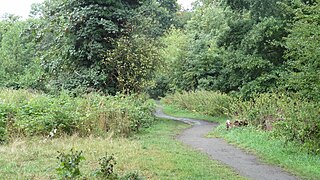
Crane Park is a 30 hectare public park next to the River Crane in western Twickenham. The park north of the river is in the London Borough of Richmond upon Thames, and the south in the London Borough of Hounslow. It is part of The Crane Corridor Site of Metropolitan Importance for Nature Conservation, and includes two Local Nature Reserves, Crane Park Island and Pevensey Road.

Lavender Pond is a 2.5 acre local nature reserve in Rotherhithe in the London Borough of Southwark. It is owned by Southwark Council and managed by The Conservation Volunteers. The nature reserve has an area of woodland as well as the pond.

Millers Pond is a small park in the Spring Park area of the London Borough of Croydon, England.




















